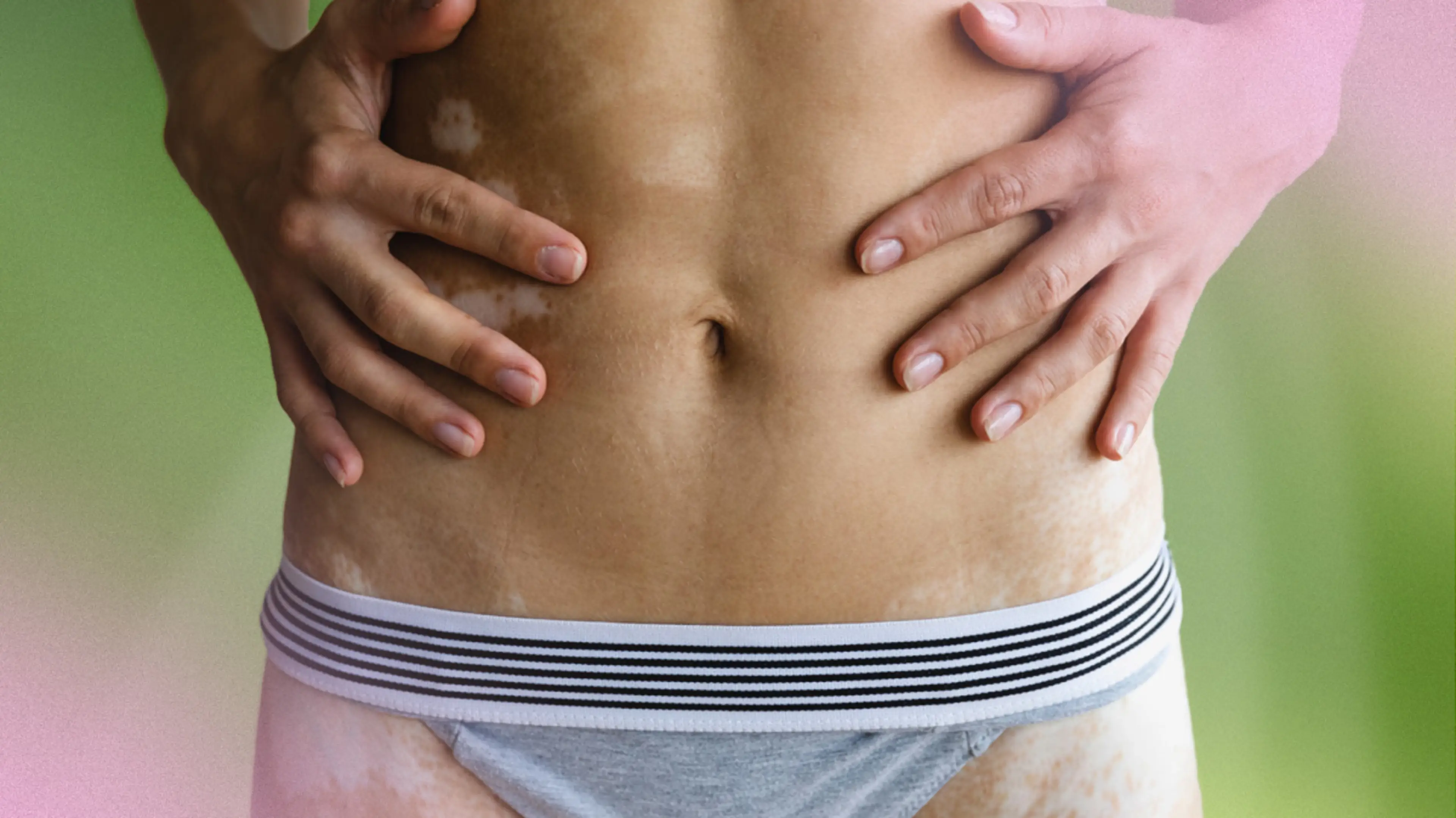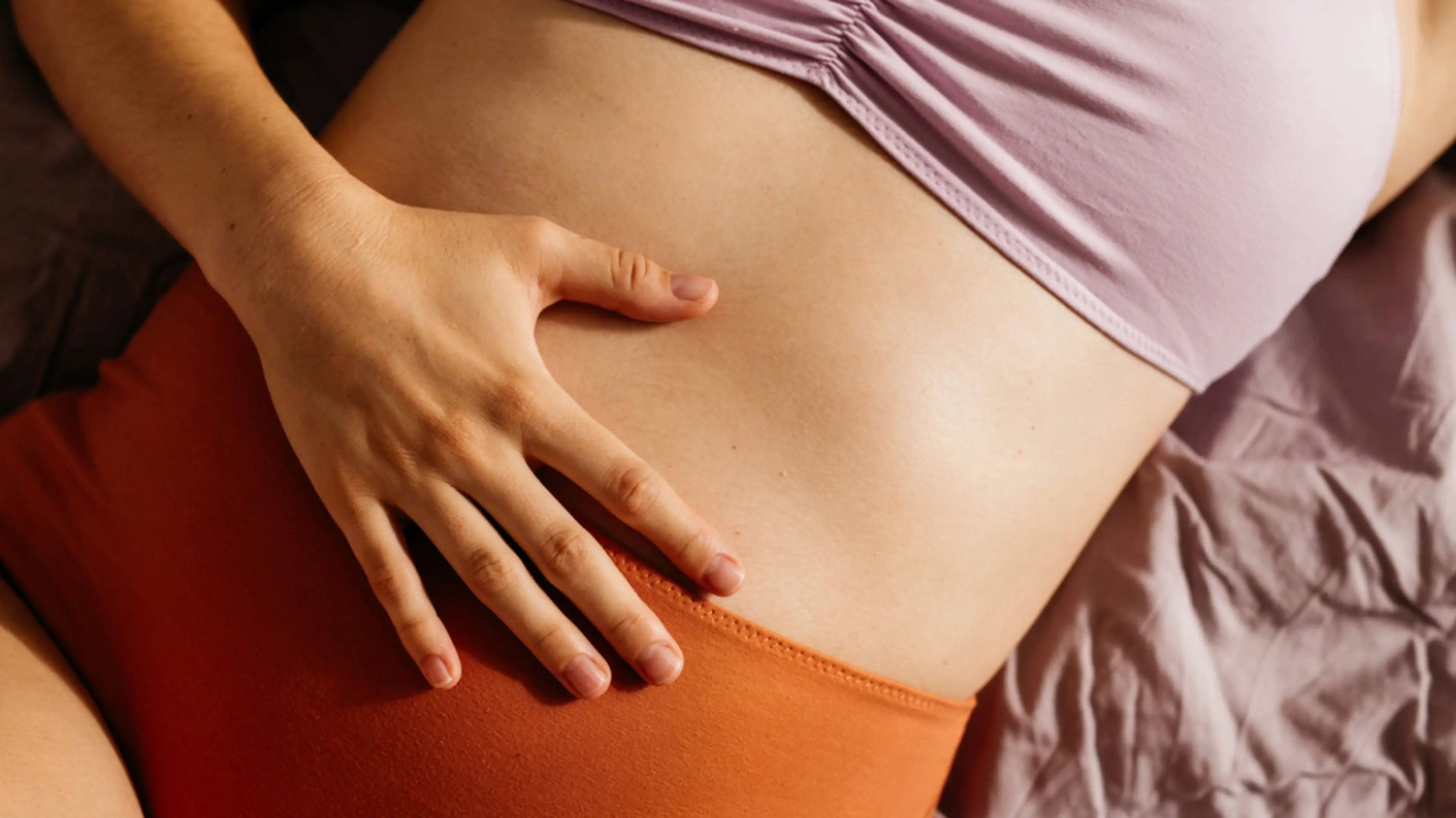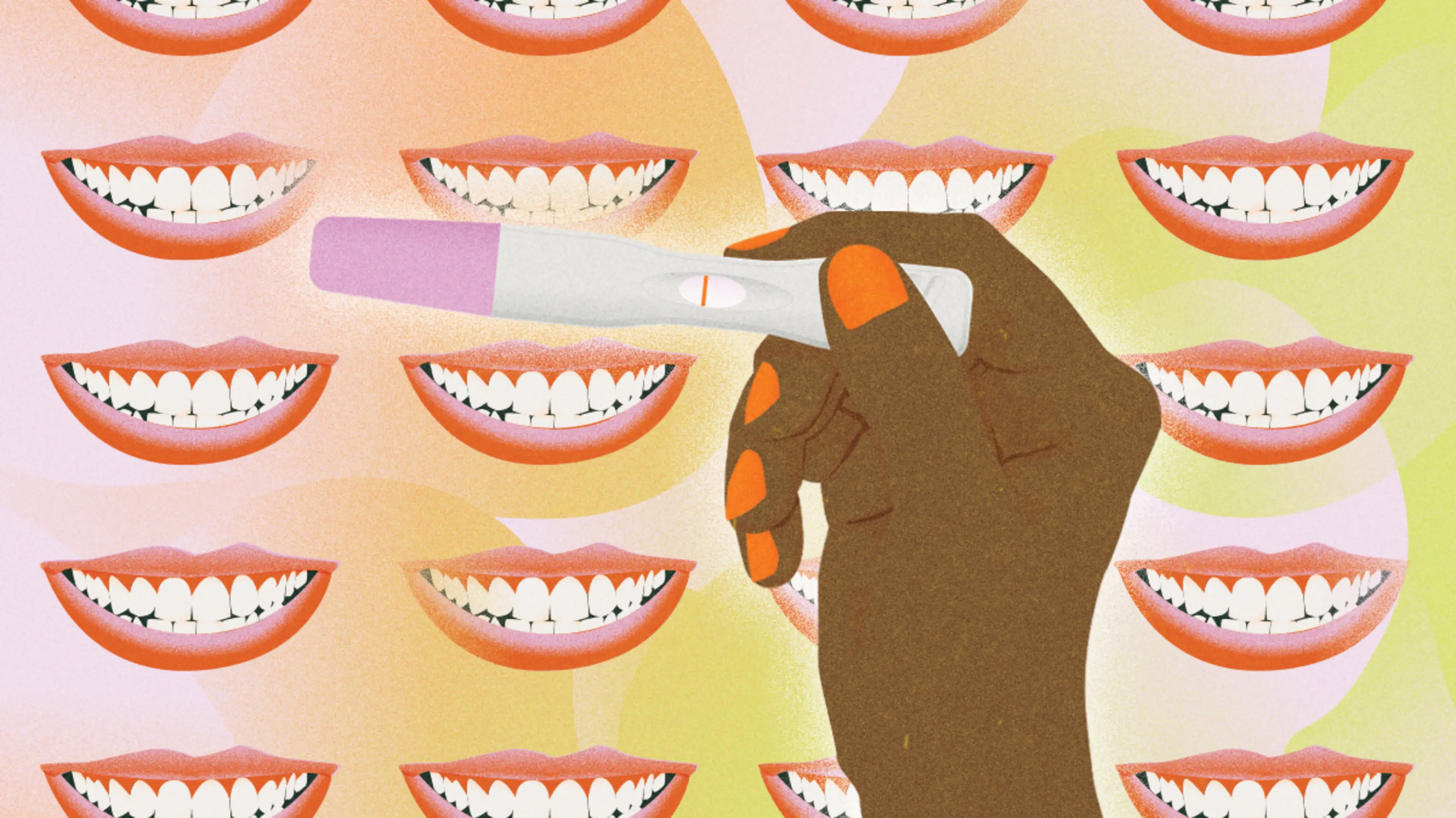TLDR: When you’re trying to get pregnant, it’s important to figure out your fertile window, which is where ovulation tracking comes in. The first step is being able to understand, recognize, or feel all the signs of ovulation–aka the sweet spot for getting pregnant.
If you’ve recently made the decision to start a family—congratulations! You’ve taken a huge life step, one that comes with many questions. The first thing you might be wondering is how to figure out when is the best time to get pregnant.
Trying to conceive, can be, well, trying. So how do you maximize your chances and plan sex accordingly? One place to start is by tracking your ovulation.
“When trying to conceive, it is important to know when you are ovulating because this is the time during which the egg is available to fertilize,” says Dr. Ilana Ressler1 , a reproductive endocrinologist at Illume Fertility.
Keep reading to learn what happens during ovulation, when it occurs, why it may be a sign of fertility, and the different ways to tell if you’re ovulating. We also talk about the best window to get pregnant and when to schedule an appointment with your doctor.
What Happens During Ovulation?
Before we break down the signs of ovulation, let’s first learn what exactly happens during this process. In its simplest form, ovulation is when a mature egg is released from the ovary. Once released, it travels down through the fallopian tubes and becomes available to be fertilized by sperm. A delicate balance of hormones controls this process.
If the mature egg is fertilized, then it will travel down to the uterus, where it will attach to the wall. If that is successful, then you’re officially pregnant. The fertilized egg—also known as a blastocyst at this stage—takes between six to 10 days2 for implantation to occur.
If the egg doesn’t get fertilized or implantation isn’t successful, then you’ll get your period, and the egg will be released with the uterine lining.
Is Ovulation a Sign of Fertility?
The short answer is yes—ovulation is a key sign of fertility. Without the release of the egg, there’s nothing for the sperm to fertilize. While the viability of sperm, fertilization, and implantation is also a part of fertility, ovulation must occur for any of these functions to happen.
When Does Ovulation Occur?
Ovulation occurs about halfway through your menstrual cycle. Your menstrual cycle begins at the start of your period. The average cycle lasts about 28 days, but the normal range is anywhere between 21 and 35 days.
Ovulation occurs 14 days before your period starts, on average. Of course, each person’s cycle is different, so you may ovulate a little earlier or later in your cycle.
How to Tell If You’re Ovulating
With ovulation being such an essential piece to fertility, it helps to know the signs. Keep in mind that some of these signs are very clear, while you may or may not experience the others.
If you’re actively trying to get pregnant, start tracking different ovulation signs (you can do this through a fertility app, a notebook, or the notes app on your phone). This will be helpful for you and your partner to learn when you’re most fertile, and it can also be helpful information to have when you talk to your doctor about your fertility.
Breast tenderness
One way to tell if you’re ovulating is by breast tenderness. Some women experience tenderness in their breasts due to higher estrogen levels3 right before ovulation. It may also be due to the high levels of progesterone after ovulation. While this sign is not one that every woman experiences, it’s worth noting in your ovulation tracker.
Breast fullness
Another change to your breasts may be their size. Your body may retain water during ovulation—estrogen may be the cause of this change, too. Some women have such a dramatic change in their breasts that they have to go up a bra size during certain times of the month.
Side pain
Have you ever experienced that dull ache on one side of your abdomen a couple of weeks before your period? That pain is called mittelschmerz4 —or ovulation discomfort. You may not notice it if you happen to be more bloated during this time. Not everyone feels it, but if you feel a slight discomfort, it’s a good idea to track it.
Increased sex drive
Some women may feel an increase in their sex drive leading up to ovulation. This surge in libido is due to luteinizing hormone (LH)5 . This hormone surges before ovulation, causing the ovary to release a mature egg. Estrogen released before ovulation can also increase sex drive.
Once ovulation occurs, your body produces more progesterone to thicken and prepare your uterus for potential implantation. Progesterone may then cause your sex drive to dip down.
Cervical mucus
You may have noticed that you have more or less discharge at certain times throughout the month6 . It may even have different consistencies. This is entirely normal—these changes are due to fluctuations in your hormone levels.
Before ovulation, your body produces more estrogen. Your cervical mucus will likely increase, and the consistency will be similar to an egg white—thick and clear. After ovulation, your cervical mucus may start to dry up due to lower estrogen levels and high progesterone levels.
Changes to your cervix
During ovulation, your cervix also changes in a couple of ways. The location of your cervix may vary, as well as the firmness and whether it’s open or closed. These changes help create a more hospitable environment for sex, sperm, and conception.
The cervix will move up higher in the vagina during ovulation. If you do become pregnant, your cervix will stay higher. If you don’t become pregnant, your cervix will move back down lower to prepare for your period.
Another change to the cervix is how firm it feels. During ovulation, your cervix may feel soft like your lips. After ovulation, it will feel more firm, like the tip of your nose. Your cervix will also open slightly, so the sperm can travel through it to get to the fallopian tubes and attempt to fertilize the egg.
After washing your hands, you can try and feel your own cervix for these changes. When you’re ovulating, it’s a little harder to reach since it moves higher, but you can find it with a bit of patience.
Light spotting
A small percentage of women experience spotting during ovulation (in one small study, just 4.8% of women experienced spotting7 ). This is likely caused by higher levels of estrogen, progesterone, and LH.
If you’re spotting between your period cycles, you may want to talk to your doctor. While it can be a sign of ovulation, it may also be a sign of anovulation—the absence of ovulation. With your doctor’s help, you may be able to rule out anovulation and use light spotting as a sign of ovulation in your tracker.
Bloating
Bloating is a not-so-fun side effect of both ovulation and the days leading up to your period. If you find yourself on the bloated side in the middle of your cycle, it’s probably due to ovulation.
Why do some women become more bloated? It goes back to an increase in estrogen and LH. These hormones may cause water retention and swelling in the stomach area.
These same hormones can also cause your gastrointestinal tract to have some unwelcome symptoms. You may be constipated, gassy, have pains, or even have diarrhea. These symptoms can all pop up during ovulation and your period.
Heightened sense of smell
Some women have noticed a heightened sense of smell during ovulation, but there isn’t a lot of research on this phenomenon. One theory suggests that estrogen increases the sense of smell8 while progesterone decreases it. As we’ve learned, estrogen rises before ovulation, which may be the reason some women have a sharper sense of smell.
If you notice that your sense of smell changes during the month, it may be worth tracking in your ovulation journal.
Basal body temperature
Until now, we’ve explored different ovulation signs based on various things you may feel during the month. Since ovulation may not be on the exact same day every month, it’s helpful to notice those signs.
There are also a couple of ways to track ovulation that are a bit more scientific. The first is tracking your basal body temperature (BBT). Your basal body temperature is your body temperature first thing in the morning before you even get out of bed.
To track this temperature, keep a thermometer on your bedside table. When you wake up in the morning, take your temperature before you even sit up. Track your BBT for a few months to see if you notice a clear pattern.
What are you looking for, exactly? You should notice a slight increase in your basal body temperature during ovulation. This change is usually tiny, less than half of a degree Fahrenheit.
If your basal body temperature has been consistently higher for three days, then you have likely ovulated. If it stays high well past ovulation—like two or three weeks, you may be pregnant.
Ovulation test kits
Another way to test for ovulation is with ovulation test kits. These test kits or strips are similar to pregnancy tests—you pee on them to get the result, which usually appears as two lines like some pregnancy tests if positive, a control line and a test line. These measure the amount of LH, which surges about a day and a half before ovulation.
“Using ovulation predictor kits or strips can be useful for many people to tell them when they are ovulating,” says Dr. Alexander Kucherov9 , a reproductive endocrinologist at Illume Fertility. Dr. Kucjerov recommends having sex “the day that it turns positive, as well as the next day. Note: It doesn’t matter if it’s “high” or “peak.” There’s no benefit after that, in terms of pregnancy rates.”
While no test is 100% accurate, some ovulation tests may be as high as 99% accurate. If you don’t see a pattern with the other signs you’re tracking, these are a great tool. The downside to ovulation tests is that they can get expensive if you’re testing frequently during your cycle each month.
When is the Best Fertile Window to Get Pregnant?
Now that you know how to track when you’re ovulating, it’s time to figure out when you’re most fertile. There are six fertile days10 during the month.
“The fertile window refers to the five days leading up to ovulation, plus the day of ovulation,” says Dr. Ressler. “If you have regular cycles, that means that you are ovulating, and the ovulation is occurring about 14 days prior to the onset of a period. So, if your cycle is 28 days, you are ovulating on day 14; if it is 30 days, you are ovulating on day 16.”
Because of all the different hormonal changes going on, sperm can live in the female body for up to five days while waiting for the egg to be released. Once the egg is released, it doesn’t stay viable for very long—only 12 to 24 hours.
When Should You See a Doctor When Trying to Conceive?
If you’ve been actively trying to conceive and are under 35, the one-year mark is the recommended time to contact your doctor.
As we age, fertility starts to drop, and your chances of conceiving naturally fall. If you are over 35 and haven’t gotten pregnant yet, make that appointment around the six-month mark. For women over 40, you may want to set up an appointment as soon as you decide to start trying.
Also, if you’ve been trying to track your ovulation but don’t see any clear signs, it may be good to set up an appointment with your doctor sooner. Dr. Kucherov adds, “Although the average menstrual cycle is around 28 days, many people can have regular, normal cycles lasting 21 to 35 days. If your cycles are longer than that, I would recommend seeing a reproductive endocrinologist to discuss an evaluation, because you may not be ovulating at regular intervals, making timing intercourse very difficult.”
Make sure to bring in your ovulation journal so you can review it with them.
Conclusion
When it comes to the signs of fertility, it’s helpful to track your ovulation—the release of a mature egg from the ovary. Ovulation is the first step in fertility. Ovulation usually occurs around 14 days before your menstrual period; however, some women ovulate earlier or later in their cycle.
There are many ways to tell if you’re ovulating, thanks to changes in your hormones. Some of these signs include slight changes in your body, like ovulation pain, bloating or a heightened sense of smell. Other signs may be more obvious, like breast tenderness, changes to the cervix, and cervical mucus changes. There are also ways to test for ovulation using your basal body temperature and ovulation test kits.
Tracking your ovulation can help determine when your six fertile days are within your cycle—the five days before ovulation and the day you ovulate.
As always, if you have any questions about your ovulation signs or are actively trying to become pregnant with no success, schedule an appointment with your doctor to talk about it more.











